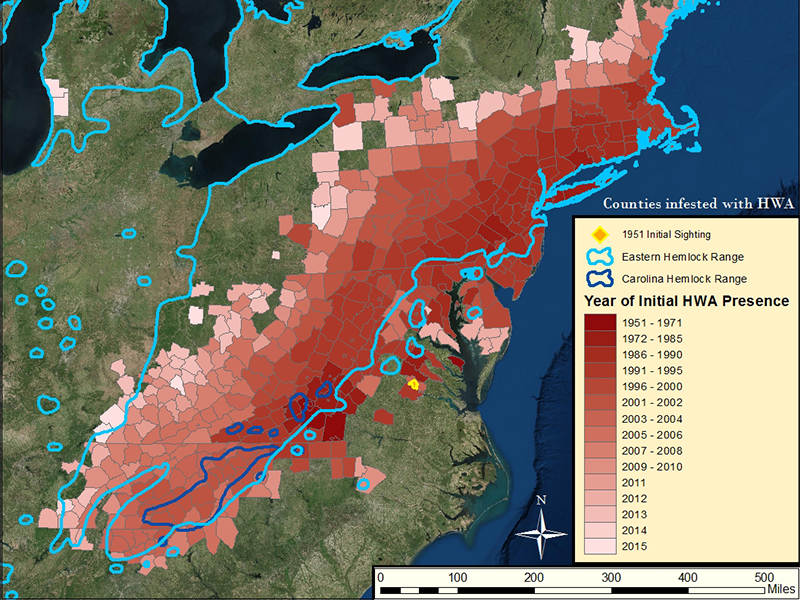Hemlock Woolly Adelgid (HWA)
The Hemlock Woolly Adelgid (HWA) is an aphid-like insect that feeds mainly upon Hemlock tree species. HWA was introduced into the eastern United States from Japan in 1951 by the import of infected hemlocks. Since its introduction, HWA has spread to 17 states (from Georgia to Maine) and causes the large-scale mortality of Native Eastern and Carolina hemlocks. This tiny parasite spreads across the forest by hitch-hiking on birds.
HWA use sucking mouthparts to pierce through the base of the hemlock needles into the parenchyma cells (nutrient transport cells). Large infestations can quickly deplete trees of their vital nutrients. Early impacts on trees infested with HWA include loss of needles and reduction to growth of new needles and branches. If left untreated, HWA infestations can result in hemlock tree death within 3-5 years of infestation.
In HWA's native environment, Japan, it experiences heavy predation, mostly from beetles. Because of this, HWA evolved an impressive bi-annual reproduction cycle. It is precisely these reproductive traits that allow HWA to have such rapid and disastrous effects on hemlock trees as they lack natural predators in the United States.
During most of the summer, HWA aestivate on the needles (basically a long sleep). Once temperatures begin to fall, they develop a white woolly egg mass. This generation is fully developed in the winter, will begin feeding, and reproduce in the spring.
The second generation feeds and produces a new generation that will crawl to a needle to aestivate for the next summer, thus repeating the life cycle. In the U.S., all HWA reproduction is asexual, but a sexual generation does occur in its native range.
